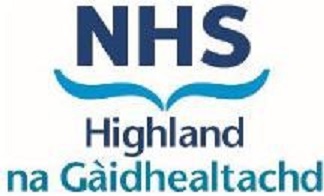Important: Formulation and dosage details
Formulation:
Eye drops 0·1% (s)
Dosage:
Eye drops, apply 1 drop 4 times daily; uncontrolled inflammation up to every hour until controlled then reduce frequency.
We asked you in January to update to v4.7.2. After the deployment planned for 27th February, this new update will be needed to ensure that you are able to download RDS toolkits even when the RDS website is not available. We will wait until as many users as possible have downloaded the new version before switching off the old system for app downloads and moving entirely to the new approach.
To check your current RDS version, click on the three dots bottom right of the RDS app screen. This takes you to a “More” page where you will see the version number.
To update to the latest release:
On iPhones – go to the Apple store, click on your profile icon top right, scroll down to see the apps waiting to be updated and update the RDS app.
On Android phones – these can vary, but try going to the Google Play store, click on your profile icon top right, click on “Manage apps and device”, select and update the RDS app.
Welcome to the February 2025 update from the RDS team
A new release of RDS is planned (subject to outcomes of current testing) for week beginning 24th February. This will deliver:
The release will also incorporate a number of small fixes, including:
We will let you know when the date and time for the new release are confirmed.
There is now the capability to publish toolkits on the web with left hand side navigation rather than tiles on the homepage. To use this feature, turn on the “Toggle navigation panel” option at the top of the Page settings menu at toolkit homepage level – see below. Please note that publication to downloadable mobile app for this type of navigation is still under development.
The Benzodiazepine tapering tool (https://rightdecisions.scot.nhs.uk/benzotapering) is now available as part of the RDS toolkit for the national benzodiazepine prescribing guidance developed by the Scottish Government Effective Prescribing team. The tool uses this national guidance developed with a wide-ranging multidisciplinary group. This should be used in combination with professional judgement and an understanding of the needs of the individual patient.
Due to the intensive work Tactuum has had to undertake on the new technology infrastructure has pushed back the delivery dates again and some new requirements have come out of the recent user acceptance testing. It now looks likely to be an April release for the search and browse interface. The archiving and version control functionality may be released earlier. We’ll keep you posted.
At the end of January, Olivia completed the generation of the latest set of usage statistics for all RDS toolkits. If you would like a copy of the stats for your toolkit, please contact Olivia.graham@nhs.scot .
We have now generated reports of all RDS toolkit content that has exceeded its review date by 6 months or more. We will be in touch later this month with toolkit owners and editors to agree the plan for updating or withdrawing out of date content.
Some important toolkits in development by the RDS team include:
The RDS team and other information scientists in HIS have also been producing evidence summaries for the Scottish Government Realistic Medicine team, to inform development of national guidance around Procedures of Limited Clinical Value. This guidance will in due course be translated into an RDS toolkit.
To book a place, please contact Olivia.graham@nhs.scot, providing your name, organisation, job role, and level of experience with RDS editing (none, a little, moderate, extensive.)
To invite colleagues to sign up to receive this newsletter, please signpost them to the registration form - also available in End-user and Provider sections of the RDS Learning and Support area. If you have any questions about the content of this newsletter, please contact his.decisionsupport@nhs.scot If you would prefer not to receive future newsletters, please email Olivia.graham@nhs.scot and ask to be removed from the circulation list.
With kind regards
Right Decision Service team
Healthcare Improvement Scotland

24/02/22 - loteprednol etabonate 0.5% eye drops added to the Formulary for the off-label indication of chronic anterior uveitis in patients who had a previous corticosteroid-related rise in intraocular pressure (IOP).
Topical corticosteroids should normally only be used under expert supervision for the short-term treatment of local inflammation. Prescribers must be certain of the diagnosis before prescribing topical corticosteroids as their use may aggravate dendritic ulcers caused by herpes simplex and, in patients predisposed to simple glaucoma, a 'steroid glaucoma' may be produced. Fluorometholone is less likely to cause 'steroid glaucoma'.
Please consider if a steroid emergency card needs to be given to the patient alongside the traditional steroid treatment card. This is to support the timely recognition and treatment of potential adrenal crisis and is suitable for some patients on oral, inhaled, topical or rectal steroids. For more information, including which patients should receive the card, see HIS for details. Steroid emergency cards have been distributed to, hospitals, GP surgeries and community pharmacies. Primary care can order replacement cards from 01463 706886.
See Peri-operative guidelines for patients with or at risk of adrenal insufficiency
Eye drops 0·1% (s)
Apply 1 drop 4 to 6 times daily; severe conditions every 30 to 60 minutes until controlled then reduce frequency.
Preservative-free eye drops 0·1% (s)
Apply 1 drop 4 to 6 times daily; severe conditions every 30 to 60 minutes until controlled then reduce frequency.
Eye drops 0·5% as sodium phosphate, 1% as acetate (s)
Apply 1 drop 4 to 6 times daily; severe conditions every 30 to 60 minutes until controlled then reduce frequency.
Preservative-free eye drops 0·5% as sodium phosphate (s)
Eye drops 0.5% off-label (specialist initiation only)
For the off-label use in chronic anterior uveitis in patients who had a previous corticosteroid-related rise in intraocular pressure (IOP).